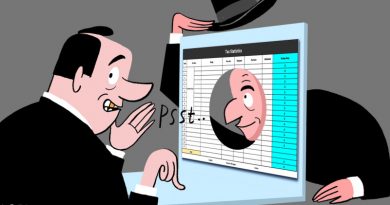US PPI in May Dropped to 1.1%, Lowest Since December 2020
The US Producer Price Index (PPI), an inflation measure that evaluates average changes over time in the prices local producers receive for their output, saw its 11th straight monthly decline in May, dropping to 1.1%, versus the expected 1.5%, according to the US Bureau of Labor Statistics (BLS). The report comes a day after the BLS reported that the year-over-year inflation rate fell to 4% last month.
A Key Gauge Points to Cooling Inflation
The US Producer Price Index – another key inflation gauge closely followed by economists – declined to 1.1% in May, marking its 11th consecutive monthly decline and the lowest rate since December 2022. This compares to the expected rate of 1.5% and the previous reading of 2.3%.
The report shows that the US inflation on a wholesale level eased once again, though this time, it fell below the pre-pandemic average. Month-over-month, the PPI fell 0.3%.
The index measures average changes over time in the selling prices received by domestic producers for their output, including goods and services. It also provides an indicator of inflationary trends at the producer level.
Fed Likely to Skip Raising Rates in June
The PPI report comes a day after the BLS released the latest consumer price index (CPI) report, which showed that the annual inflation rate in the US fell to 4% in May, while economists estimated 4.1%. The CPI print showed that inflation cooled down significantly from April, when it stood at 4.9% and more than halved from its 9.1% peak it reached in June 2022.
Meanwhile, Core CPI, a closely watched inflation gauge that disregards food and energy costs, was reported at 5.3%, in line with expectations. Month-over-month CPI increase also matched estimates, rising 0.4% from April.
Following the release of vital inflation data, the Federal Reserve (Fed) is set to announce its next monetary policy move on June 14, with many expecting the central bank to skip raising interest rates this month. However, top forecasters believe the Fed will still deliver at least one more interest hike in 2023, as inflation remains notably above its 2% target.
This article originally appeared on The Tokenist
Sponsored: Tips for Investing
A financial advisor can help you understand the advantages and disadvantages of investment properties. Finding a qualified financial advisor doesn’t have to be hard. SmartAsset’s free tool matches you with up to three financial advisors who serve your area, and you can interview your advisor matches at no cost to decide which one is right for you. If you’re ready to find an advisor who can help you achieve your financial goals, get started now.
Investing in real estate can diversify your portfolio. But expanding your horizons may add additional costs. If you’re an investor looking to minimize expenses, consider checking out online brokerages. They often offer low investment fees, helping you maximize your profit.
Source: Read Full Article


